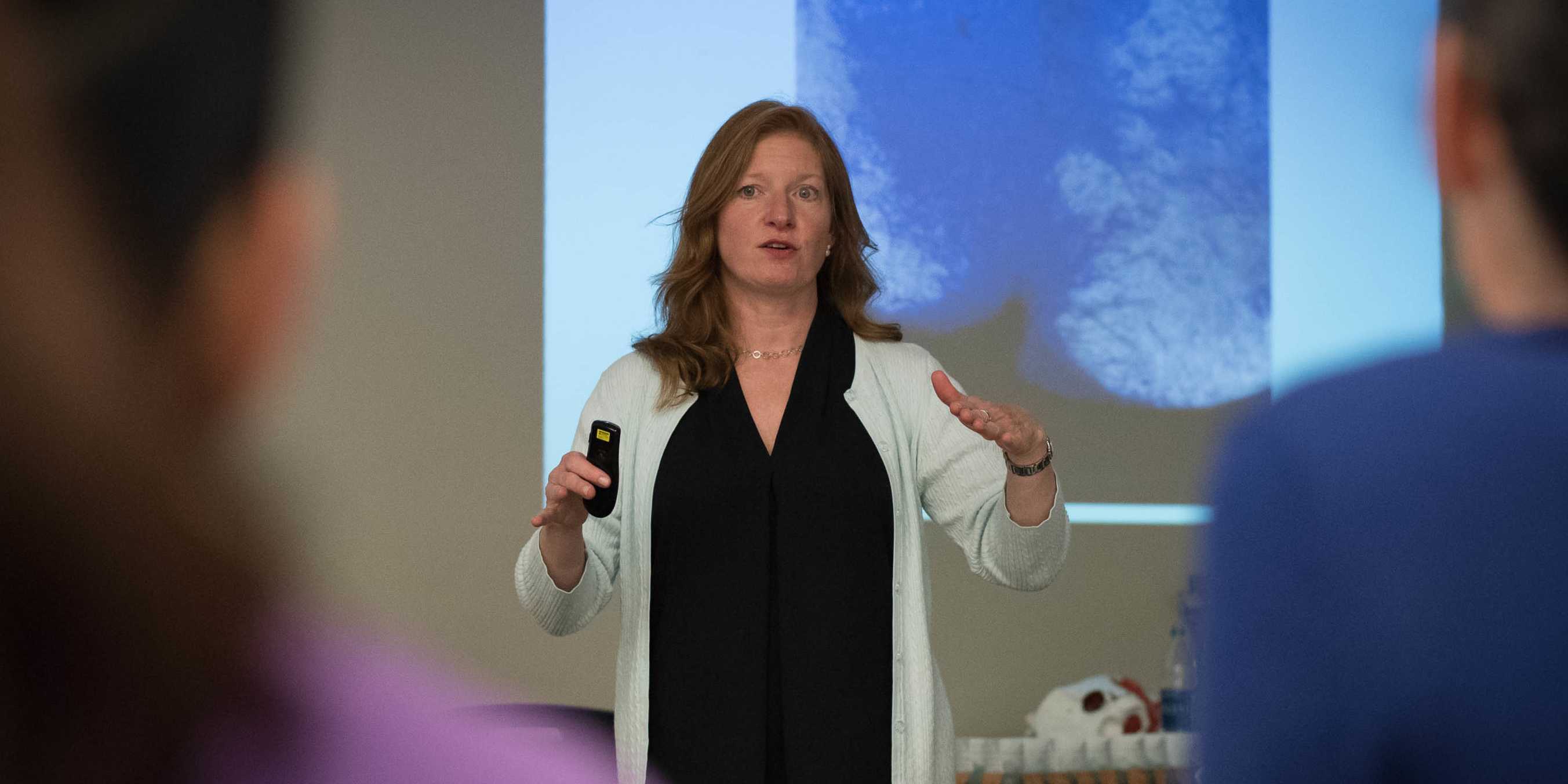
Have you ever wanted to show LGBTQIA+ patients your allyship and that your health care facility is an inclusive and welcoming environment, but have never been sure how? You're not alone! Many healthcare professionals feel uncertain about how best to support LGBTQIA+ individuals, especially given the diverse and evolving nature of these communities. Below are 3 simple yet impactful ways to make your office a more inclusive space for LGBTQIA+ and Intersex patients.
As healthcare professionals, we have the responsibility to create environments where every patient feels safe, seen, and understood. While it may seem like a lot to consider, small adjustments can have a lasting impact on the experiences of LGBTQIA+ patients. To dive deeper into building an inclusive practice, including how to be an ally to LGBTQIA+ folx, join the upcoming session on Intersex Patients: Rehab & Inclusive Care with Dr. Molly O’Brien-Horn on August 23, 2025!
Inclusive Documentation and FormsWhen it comes to making a space truly inclusive, one of the first areas to look at is documentation. While many healthcare facilities have begun to add spaces for patients to share their pronouns or gender identity on intake forms, there’s always more that can be done to reflect the diversity of your patients.
- Gender Identity: Include options beyond just "Male" or "Female." Consider adding options like “Non-binary,” “Genderqueer,” “Prefer not to answer,” or a free text field where patients can write in their gender identity.
- Sexual Orientation: Instead of only asking for heterosexual or homosexual orientations, provide a range of options, including "Bisexual," "Pansexual," "Asexual," and “Queer.” Also, give patients the space to self-identify if their sexual orientation doesn’t fall within these options.
- Intersex and Variations in Sex Characteristics: Patients may have unique needs based on intersex traits or variations in sex characteristics. Including a question about whether a patient identifies as intersex or has a variation in sex characteristics can provide vital context for care. This helps in creating an affirming space and avoids erasure of intersex experiences.
Inclusive Signs, Flags, and Pins
Visually demonstrating your commitment to inclusivity can be incredibly powerful, but it’s important to go beyond just a rainbow pride flag.
- LGBTQIA+ and Intersex Pride Flags: While the rainbow pride flag is commonly associated with LGBTQ+ inclusion, it's important to acknowledge that not all LGBTQIA+ individuals are represented by that flag. For example, the Intersex Inclusive Progressive Pride Flag includes the yellow and purple circle, which is a symbol for intersex people. Displaying this flag or using intersex pride pins in your office makes a visible statement of support for Intersex patients, who are often marginalized within LGBTQIA+ spaces.
- Gender-Neutral Bathrooms: Clear signage for gender-neutral or all-gender bathrooms is another way to show inclusivity. These spaces are especially important for transgender, non-binary, and gender-nonconforming individuals, who may feel uncomfortable or unsafe using gendered restrooms.
Why This Matters: These small but meaningful symbols signal to your patients that they are seen, valued, and respected. The presence of inclusive symbols like flags, stickers, or signs also helps to ease the anxieties of patients who may be concerned about facing discrimination in a healthcare setting.
Accessibility
Creating an accessible office environment is an essential component of inclusivity, as it helps ensure that everyone, including LGBTQIA+ individuals with disabilities, feels welcome. Accessibility goes beyond just physical ramps and elevators—it includes how your office accommodates people from all backgrounds and experiences.
- ADA Compliance: Make sure that your office is fully compliant with the Americans with Disabilities Act (ADA). This includes wheelchair ramps, accessible parking spaces, Braille signage, and elevators. For LGBTQIA+ folx with disabilities, these elements are especially important as they can help create a more comfortable, dignified experience while accessing care.
- Training and Language: Accessibility also involves educating staff on respectful and inclusive language when interacting with patients with disabilities or chronic health conditions. It’s important that everyone from front desk staff to physicians understands how to communicate effectively with people who have hearing, visual, mobility, or cognitive impairments.
- Transgender and Non-Binary Specific Care: Many transgender and non-binary individuals face unique healthcare challenges when it comes to physical accessibility. For example, accessible dressing rooms and changing areas that respect gender identity are critical. You could also consider gender-neutral fitting rooms and patient rooms, making sure your spaces are accommodating for all genders.
Why This Matters: Ensuring that your office is accessible and compliant helps every patient feel like they belong. Accessibility is not just about physical space but also about creating an environment where LGBTQIA+ individuals can communicate their needs without fear of judgment or misunderstanding.
Incorporating these simple strategies into your practice can make a profound difference for LGBTQIA+ and Intersex patients. From creating inclusive forms to displaying pride flags that acknowledge diverse identities, and ensuring your office is accessible for all, every step you take toward inclusivity helps build trust and improve patient care.
As healthcare providers, we must continually educate ourselves, listen to our patients, and strive to create spaces where every individual feels affirmed and respected. Join us for the upcoming course with Dr. Molly O’Brien-Horn on August 23rd for Intersex Patients: Rehab & Inclusive Care to take your allyship to the next level! Together, we can make healthcare environments more supportive for everyone.
Resources:
- National LGBTQIA+ Health Education Center. (2016, February 17). Providing Inclusive Services and Care for LGBT People. https://www.lgbtqiahealtheducation.org/wp-content/uploads/Providing-Inclusive-Services-and-Care-for-LGBT-People.pdf.
- National LGBTQIA+ Health Education Center. (2020). Affirming Primary Care for Intersex People 2020. https://www.lgbtqiahealtheducation.org/wp-content/uploads/2020/08/Affirming-Primary-Care-for-Intersex-People-2020.pdf.
- Lambda Legal & InterACT. (2018, July 19.) Intersex-Affirming Hospital Policy Guide: Providing Ethical and Compassionate Health Care to Intersex Patients. https://www.lambdalegal.org/publications/intersex-affirming.
- Pride in Diversity & OII Australia. (2014). Employers’ Guide to Intersex Inclusion. https://ihra.org.au/wp-content/uploads/key/Employer-Guide-Intersex-Inclusion.pdf.
AUTHOR BIO
Molly O’Brien-Horn, PT, DPT, CLT, PCES, CCI
 Molly O’Brien-Horn, PT, DPT, CLT, PCES, CCI graduated from Rutgers School of Biomedical & Health Sciences with her Doctor of Physical Therapy degree. She is a Pelvic Health Physical Therapist, a Certified Lymphedema Therapist, a Pregnancy & Postpartum Corrective Exercise Specialist, an LSVT BIG Parkinson’s Disease Certified Therapist, and an APTA Credentialed Clinical Instructor. She is also a trained childbirth and postpartum doula. Molly is a member of the APTA Academy of Pelvic Health Physical Therapy and is also a Teaching Assistant with the Herman & Wallace Pelvic Rehabilitation Institute.
Molly O’Brien-Horn, PT, DPT, CLT, PCES, CCI graduated from Rutgers School of Biomedical & Health Sciences with her Doctor of Physical Therapy degree. She is a Pelvic Health Physical Therapist, a Certified Lymphedema Therapist, a Pregnancy & Postpartum Corrective Exercise Specialist, an LSVT BIG Parkinson’s Disease Certified Therapist, and an APTA Credentialed Clinical Instructor. She is also a trained childbirth and postpartum doula. Molly is a member of the APTA Academy of Pelvic Health Physical Therapy and is also a Teaching Assistant with the Herman & Wallace Pelvic Rehabilitation Institute.Molly is passionate about providing accessible healthcare to pelvic health patients of all age ranges, gender identities, sexualities, body variations, and all ability levels.

When we consider the intersectionality of sexual orientation and gender identity within the realm of intersex and LGBTQIA+ identities, we must recognize the multifaceted nature of individuals' experiences. For some intersex individuals, navigating aspects of identity may be complex, as their biological sex characteristics may not align with societal expectations of gender. Intersex individuals face a range of challenges in navigating their identities, including medical interventions without their consent, stigmatization, and lack of awareness and understanding from healthcare providers. These challenges highlight the need for clinicians to educate themselves on intersex experiences and provide inclusive and affirming care.
Resources for Clinicians to Support Intersex Patients
 While you may be reading this thinking, ‘I don’t know anyone who is intersex,’ or ‘I don’t work with Intersex patients,’ you might be surprised to learn that you probably do! Intersex variations are as common as having red hair. The United Nations Free & Equal Initiative Intersex Fact Sheet states that “According to experts, somewhere between 0.05 percent and 1.7 percent of the global population is born with intersex traits. The upper estimate is bigger than the population of Mexico.” So, if you know, or have ever seen someone with red hair, you probably know or have seen someone who is intersex too.
While you may be reading this thinking, ‘I don’t know anyone who is intersex,’ or ‘I don’t work with Intersex patients,’ you might be surprised to learn that you probably do! Intersex variations are as common as having red hair. The United Nations Free & Equal Initiative Intersex Fact Sheet states that “According to experts, somewhere between 0.05 percent and 1.7 percent of the global population is born with intersex traits. The upper estimate is bigger than the population of Mexico.” So, if you know, or have ever seen someone with red hair, you probably know or have seen someone who is intersex too.
Clinicians who are looking to better support their intersex patients can benefit from accessing resources specifically tailored to understanding and addressing the unique needs of this community. Two great Intersex-led organizations to help educate you and provide support to intersex patients and their caregivers are InterACT Advocates for Intersex Youth and InterConnect.
These organizations offer information and guidance on how to provide affirming care to intersex individuals and provide help to clinicians who want to educate themselves on intersex identities, familiarize themselves with the challenges faced by intersex individuals, and learn about best practices for promoting the health and well-being of their intersex patients.
Educate yourself, stand with intersex advocacy organizations, and amplify intersex voices to make a difference. Let's strive for a world where every identity is celebrated and respected because diversity strengthens us all. As Maya Angelou once said, "We all should know that diversity makes for a rich tapestry, and we must understand that all the threads of the tapestry are equal in value no matter their color."
So how do I learn more? What resources can I give to intersex patients and their families to support them? Well, to learn more about how to be an ally in healthcare to intersex patients and their families, and for more resources, register today for Intersex Patients: Rehab and Inclusive Care, scheduled for February 8th, 2025!
Additional Resources:
- InterACT Advocates, Lambda Legal (2018). Providing Ethical and Compassionate Health Care to Intersex Patients: Intersex-Affirming Hospital Policies. This guide incorporates input from medical practitioners, legal experts, and members of the intersex community. The guide offers model policies for hospitals designed to promote best practices and assist hospitals and their providers in delivering appropriate, intersex-affirming care. For example, the policies address issues of confidentiality, non-discrimination, gender identification, infant genital surgery, and sterilization, shared decision-making, and informed consent – issues that, when mishandled, can cause significant harm to intersex patients and their families, as well as open up medical institutions to significant liability. The guide also incorporates background information and explanations for each model policy to provide education in an area that has historically been misunderstood.
- Intersex Peer Support Australia (IPSA). https://isupport.org.au/. IPSA is a non-profit organization, led by people with variations of sex characteristics (sometimes known as intersex) who are passionate about combatting isolation, shame, and stigma through community connection and peer support. IPSA seeks to tackle the stigma and misconceptions that surround intersex variations through education and advocates on issues affecting the wider intersex community to improve affirmative healthcare, foster intersex pride, strengthen our community, and deepen social culture. IPSA is a peer-led, not-for-profit intersex organization and a registered health promotion charity.
- InterLink. https://www.ilink.net.au/. InterLink brings people together to talk about living with innate variations in sex characteristics with the support of trained counselors and intersex peer workers. InterLink also provides community care coordination, helping people get linked in with appropriate allied health and community-based services, advocacy, and peer support groups.






































